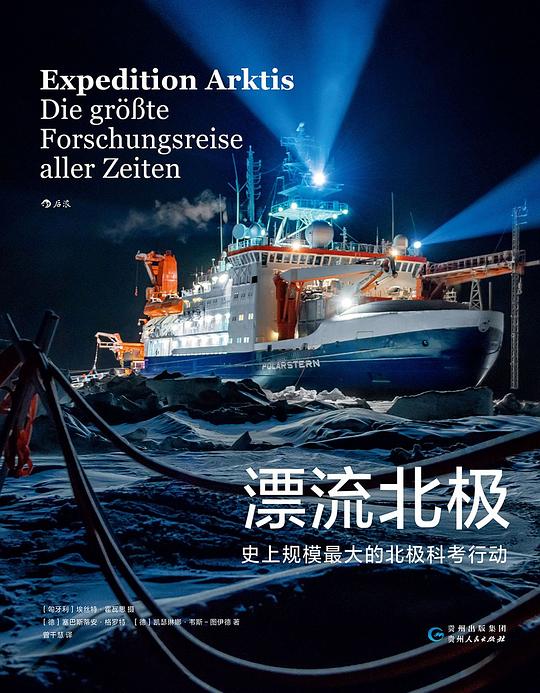
《漂流北极》北极漂流团超1.4亿预算扬帆启航
书名:漂流北极
1
0

怒火攻击 2023-05-22 11:52:42
During the period of 2019 to 2020, a MOSAiC research team followed in the footsteps of explorer Fridtjof Nansen, aboard the Polarstern icebreaker, and penetrated deep into the central Arctic. They drifted with the ice floes, almost reaching the edge of the Atlantic sea ice. This scientific expedition, with a budget of 140 million euros, involved over 500 experienced Arctic explorers from more than 20 countries, and carried out unprecedented observations and recordings of the Arctic climate.
"Drifting in the Arctic: The Largest Arctic Expedition in History" is a photo book that documents this research journey. As the Arctic is constantly melting, the landscapes and climate characteristics are rapidly changing, making every photo in this book precious and impossible to capture again.
During the expedition, scientists sought to answer questions such as how sea ice forms, how the ecosystem below the ice layer changes with global warming, and what impacts the Arctic has on climate change. Before departure, team members underwent rigorous training, including floating in cold seawater for a long time to test and adapt their work clothes and environment, practicing shooting skills at night, and conducting most of their work on the ice surface at night when the ice floes and ice tower shapes are clearly visible, but also when polar bears are active, requiring the team to practice shooting to reduce the risk of outdoor expeditions.
The Polarstern carried nearly 500 tons of research supplies, including essential items for team members daily life, research equipment, and maintenance tools. The research team made full preparations to face the challenges of various climates and emergencies during the expedition.
"Drifting in the Arctic" not only includes overall and detailed images of the Polarstern, but also depicts black seawater under scattered ice floes, daily life and work processes of the researchers in the Arctic. The photos capture both panoramic and close-up views of the Arctics terrain, as well as the ice crystals formed on the researchers eyelashes. Through these photos, we can feel the difficulties and fun of the research work, and see the team members dedication, rigorousness, warmth, and love for life. Reading the book is like watching a condensed movie.
Overwintering is always full of risks and challenges. When an ice crack on the surface opens at an alarming speed, research stations are separated into two halves, and team members need to paddle kayaks to different locations to check the damage to the stations. The climate changes in the Arctic much faster than on the continent, and there are many things that the research team needs to adapt to. We believe that in the future, there will be more scientific expeditions to lead humanity into more mysterious areas of the Earth and the universe.
相关推荐
萤火谷的梦想家
艾莉森•麦吉出生于1960年,是美国《纽约时报》畅销书作家,同时也是大都会州立大学创意写作课的教授。她的作品被翻译成20多种语言并出版,也曾被提名普利策奖,并获得苏斯博士奖金奖、克里斯托弗图书奖、美国 [美]艾莉森•麦吉/[美]克里斯托弗•丹尼斯/绘 2023-03-27 16:50:25鬼马女神捕1·绝密卧底(上)
腹黑凤凰vs毒舌鸡妖——蓝翎:“小姬,跟我去人界吧!”姬十四:“干吗?让人宰了我做小鸡炖蘑菇吗?”蓝翎:“不啊,让妖怪宰了你做小鸡炖蘑菇更气派。”凤凰蓝翎和鸡妖姬十四生活在无忧无虑的灵界。他们的故乡叫 郝天晓 2023-04-17 00:22:47© 2023-2025 百科书库. All Rights Reserved.












发表评价